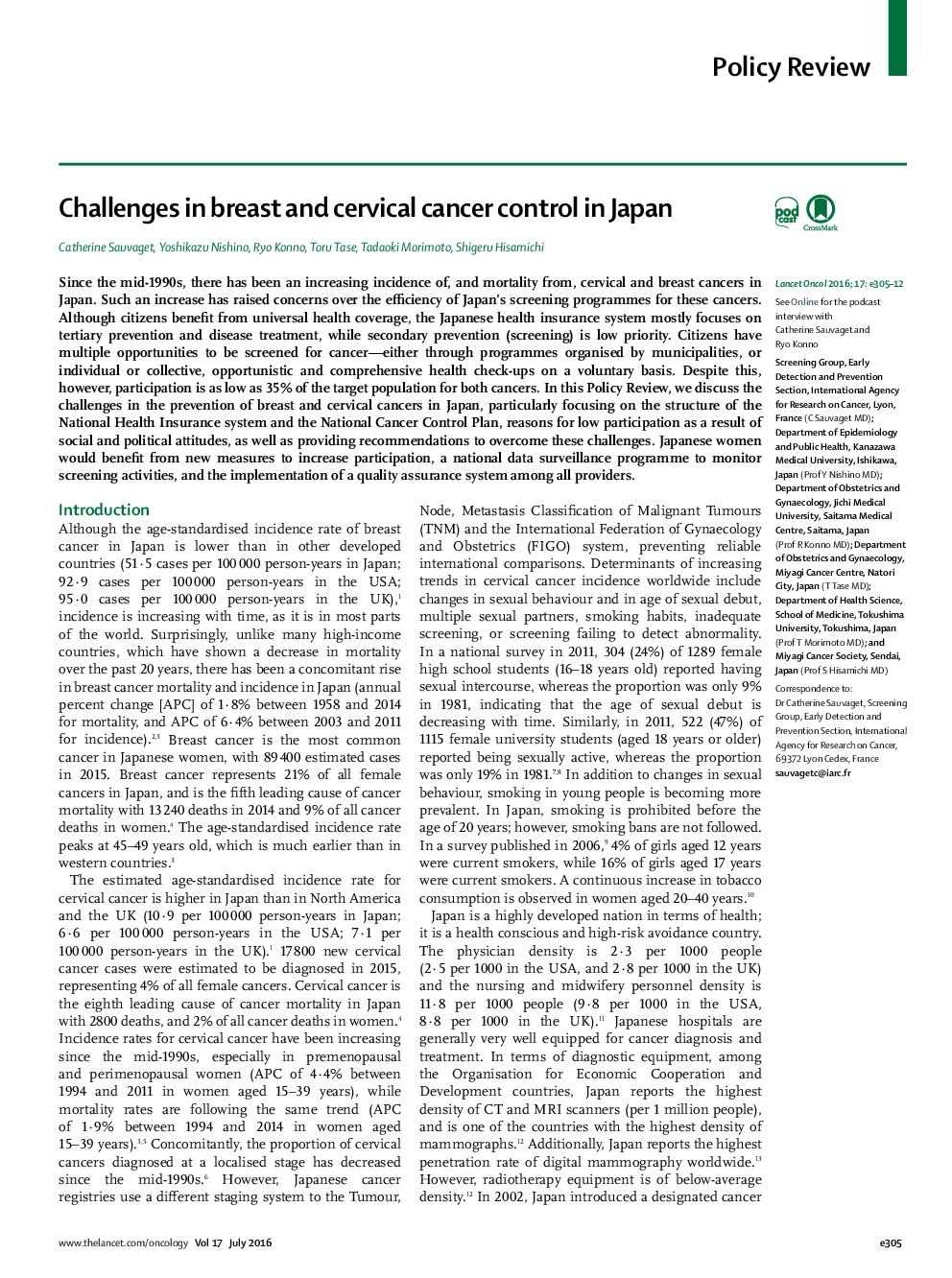| Article ID | Journal | Published Year | Pages | File Type |
|---|---|---|---|---|
| 3993165 | The Lancet Oncology | 2016 | 8 Pages |
SummarySince the mid-1990s, there has been an increasing incidence of, and mortality from, cervical and breast cancers in Japan. Such an increase has raised concerns over the efficiency of Japan's screening programmes for these cancers. Although citizens benefit from universal health coverage, the Japanese health insurance system mostly focuses on tertiary prevention and disease treatment, while secondary prevention (screening) is low priority. Citizens have multiple opportunities to be screened for cancer—either through programmes organised by municipalities, or individual or collective, opportunistic and comprehensive health check-ups on a voluntary basis. Despite this, however, participation is as low as 35% of the target population for both cancers. In this Policy Review, we discuss the challenges in the prevention of breast and cervical cancers in Japan, particularly focusing on the structure of the National Health Insurance system and the National Cancer Control Plan, reasons for low participation as a result of social and political attitudes, as well as providing recommendations to overcome these challenges. Japanese women would benefit from new measures to increase participation, a national data surveillance programme to monitor screening activities, and the implementation of a quality assurance system among all providers.
